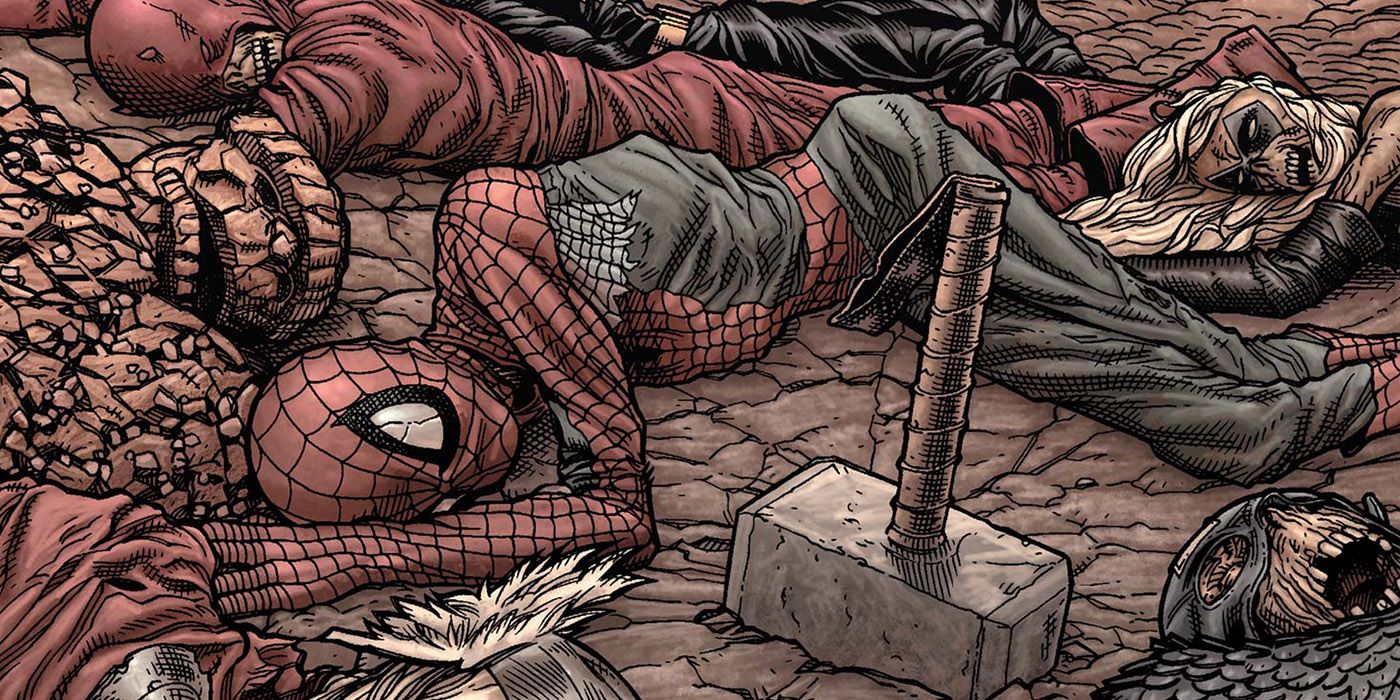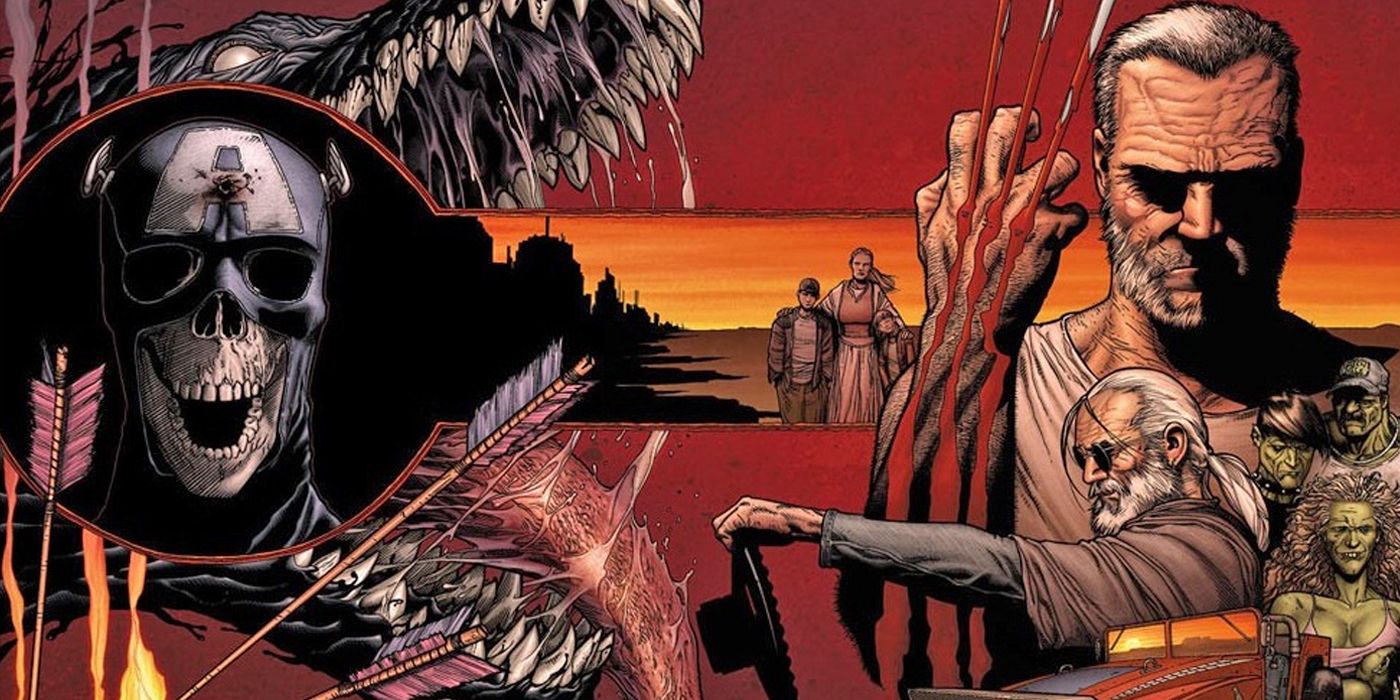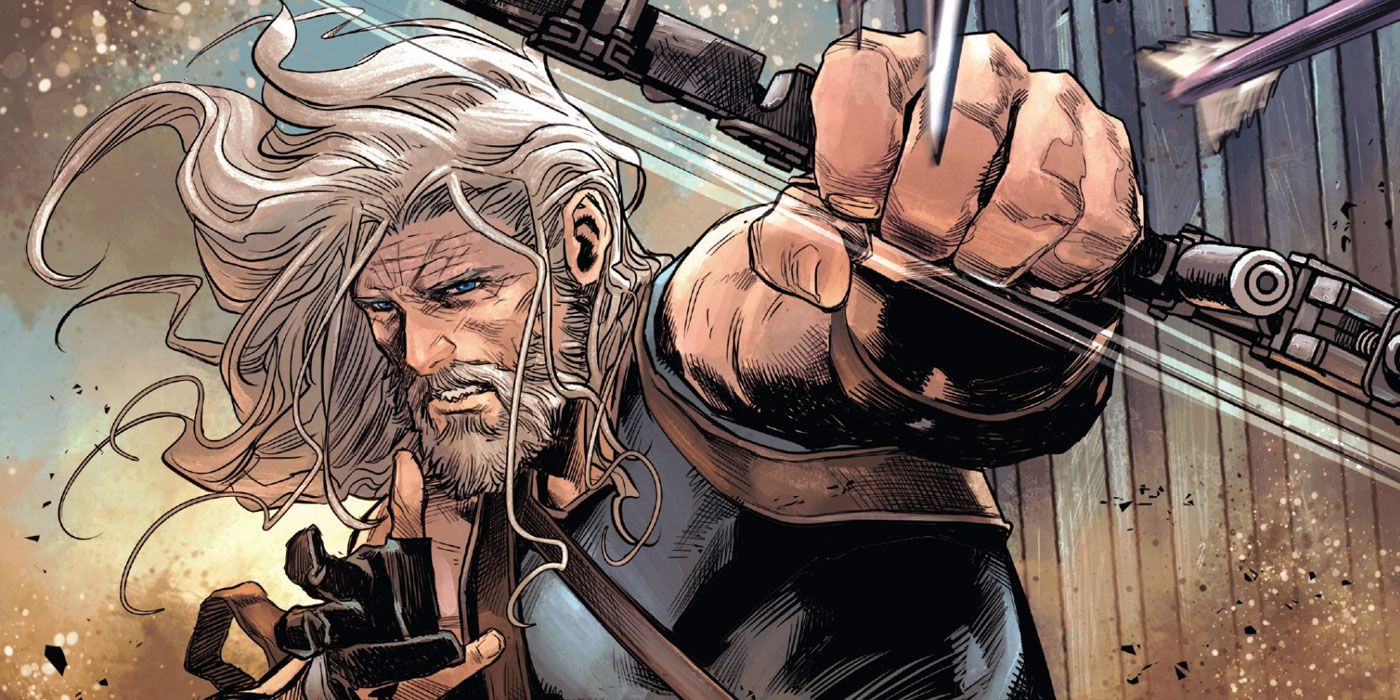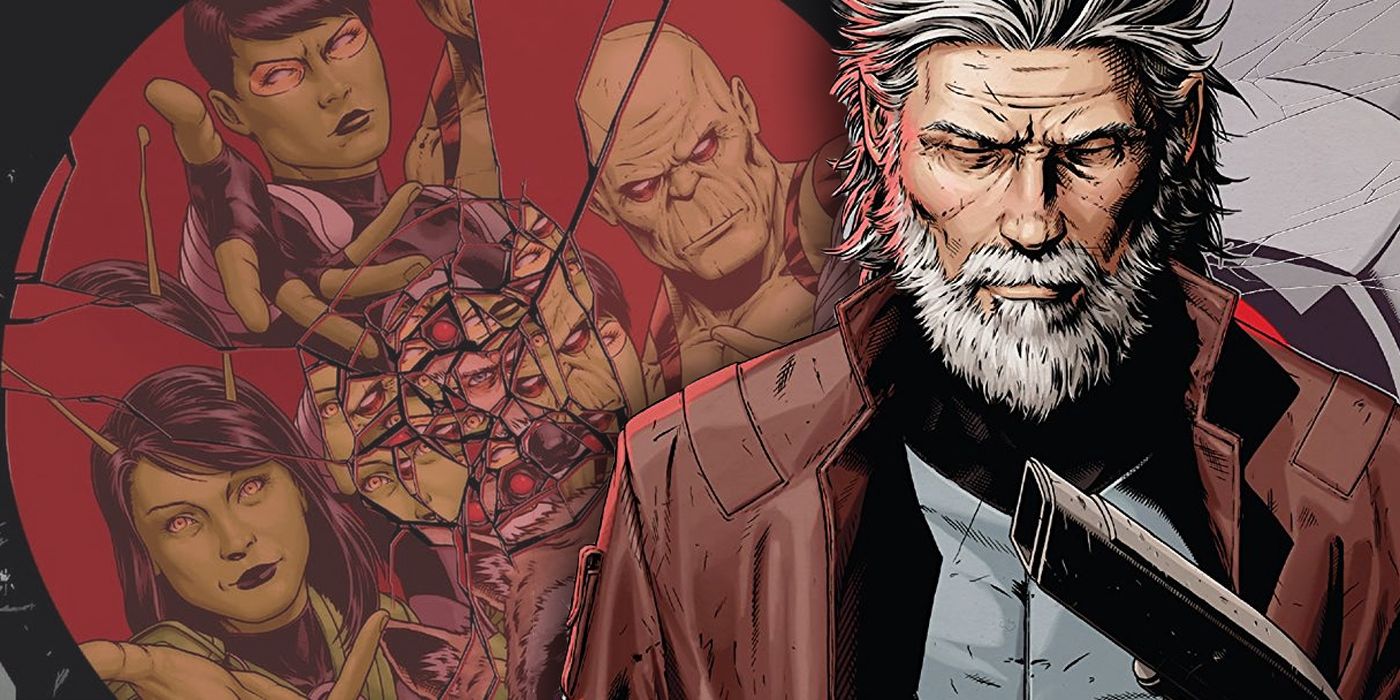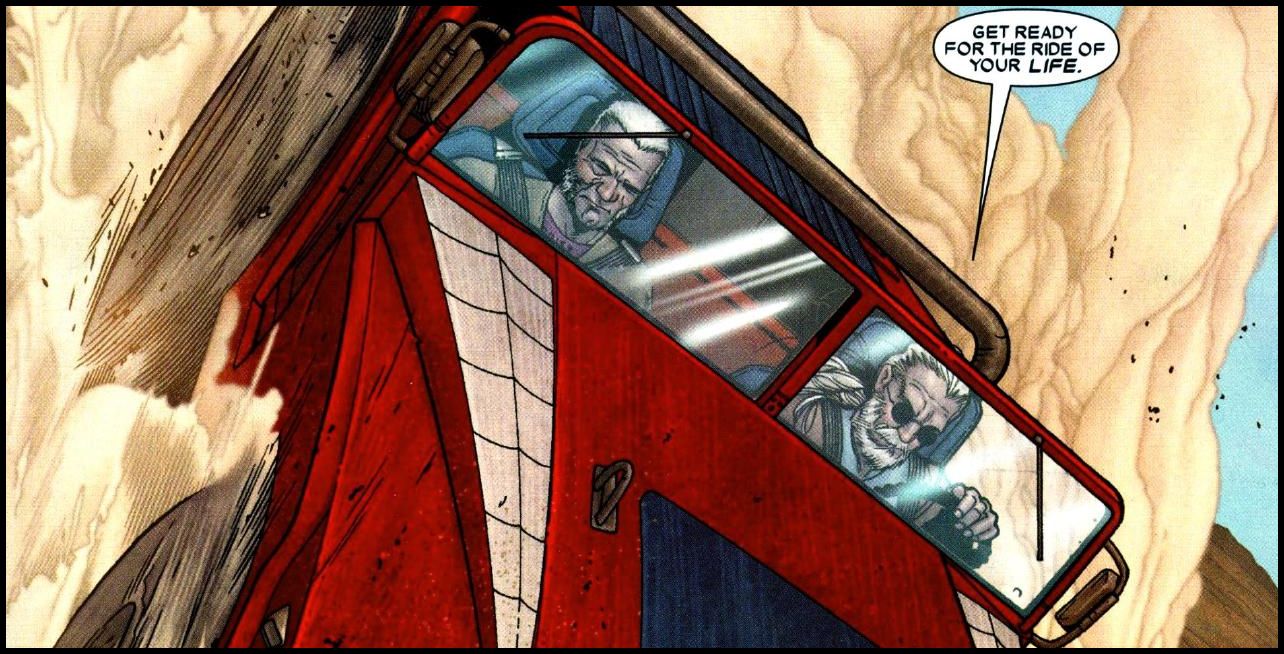Marvel created three alternate wasteland-world comics that spurred the more recent Wastelanders one-shots. Old Man Logan, Old Man Hawkeye, and Old Man Quill, published in that order, tell the stories of aging superheroes living in the aftermath of great destruction. After A-listers from the Avengers and X-Men are slain, Logan, Hawkeye, and Peter Quill find themselves dealing with internal struggles to overcome feelings of hopelessness, inadequacy, and rage. Each is intriguing and enjoyable in its own right, but one stands out as the greatest 'old man series' so far.
The protagonists try to create new lives, exact revenge, and/or wage diplomacy, years after deadly attacks shook them to their core. These are heroes surviving barren landscapes mourning, the loss of friends, families, or in one case, an entire planet. All three series are tied together and feature Earth under the tyrannical rule of a revolving door of despots, including Red Skull and Dr. Doom, with an unknown supreme leader hiding behind the curtain. The creators of all three series take daring jaunts away from well-known and well-loved storylines to bring fans to the dark, dystopian world of the wastelands.
Marvel's Old Man Logan Offered Superb Storytelling and Art
Mystery shrouds a superhero massacre that leaves most of the Avengers and X-Men dead in Wolverine: Old Man Logan (by Mark Millar and Steve McNiven). Old Man Logan lives as simple a life as one can, as a farmer in a fascist 'Amerika' where Red Skull is president and the country is divided into four main kingdoms. For a half-century, Logan retracts his claws, refusing to fight even to defend himself. Clint Barton's Hawkeye, now blind, convinces Logan to road trip cross-country to deliver Hawkeye's inexplicable 'cargo' in a retooled Spider-Mobile.
Characters and their adventures in Millar's tale are kaleidoscopic. Honky-tonk Hulks bully Logan, the subterranean 'moloids' sink cities, and surviving superheroes face dinosaurs Colosseum-style. In this dystopia, the corpses of superheroes litter shallow graves. Cities are mere husks and pillaged at random. McNiven's artwork is well suited to depicting such a dark future for the Marvel Universe. He captures each scene in precise detail, leaving fans to relish details as fine as the fletching on Hawkeye's arrows.
Old Man Hawkeye Expanded the 'Old Man' Universe
Old Man Hawkeye (by Ethan Sacks and Marco Checchetto) serves as a prequel to Old Man Logan. The story contextualizes the 'Old Man' timeline and reveals the mastermind behind a massacre that ended the lives of iconic Marvel heroes like Spider-Man and the Thing. Hawkeye spends forty-five years scraping by in the wastelands of a country controlled by supervillains, before rallying to exact revenge on colleagues who betrayed him. One of few Avengers to survive the slaughter, Hawkeye discovers he's rapidly losing his eyesight and thus has little time to spare as a capable sharpshooter. Following a failed attempt to recruit an aging Wolverine (who just wants to take care of his family and his farm) Hawkeye teams up with Kate Bishop and hunts those on his hit list. Venom makes things difficult, tracking Hawkeye with the hopes of exacting revenge.
The best things this book has to offer are its villains and various fight scenes. Sacks ties background details to those established in Millar's original and gives the tale a dramatic clout. Venom infects a multigenerational copy of Madrox the Multiple Man, which allows Venom to use Madrox's ability to multiply and unleash dozens of Venom replicates. Full of gut-wrenching violence, Sacks portrays a twisted mercenary hellbent on murdering any surviving superheroes to hunt the Hawkeyes. T-Rex versus Venom, for instance, is a particularly entertaining fight under Checchetto's expert draftsmanship. In addition, Kate Bishop steals the spotlight as she faces Nobili and his henchmen. The book is full of fun details tied to Old Man Logan's wasteland, like Kate Bishop's refuge being overrun with T-Rexes imported from the Savage Lands as prospective trophies for rich hunters.
Old Man Quill Completed the Trilogy
In Old Man Quill (by Sacks and Robert Gill) Peter Quill, aka Star-Lord, life is permanently altered after the Universal Church of Truth annihilates Planet Spartax. His family is slaughtered in the devastation. Quill spends his days alone either escaping by cryo-sleep or into the bottle. He's visited by old friends who tell him it's time to pull himself together and save the universe. Resentful of Earth's heroes after feeling forsaken by them during his war, Quill is reluctant to help in any galactic affairs.
Sacks and Gill create the most lighthearted of the three series. Despite offering moments of levity, Old Man Quill still has extremely horrific moments reminiscent of the previous two titles in the 'Old Man' universe. In this sequel to the first two series, it's made clear that the territories on Earth experience a constant turnover of despots including the likes of Red Skull, Magneto, Kingpin, and even Spider-Woman.
The Original Old Man Logan Stands Out As the Best of the Series
In the original Old Man Logan, Millar and McNiven are an unbeatable combination. The originality, engrossing plot twists, and outstanding artwork make their collaboration the best of the bunch. Writing a story incorporating a blind Hawkeye, a hayseed hulk family, and a gang of Ghost Riders in a post-apocalyptic wasteland is a delicate balancing act both from a script and artistic standpoint. In particular, Millar's script and characterizations are beyond bold -- he creates an alluring melody out of a cacophony of bizarre circumstances and outlandish characters.
The dynamics between a murderous Hawkeye and a Wolverine-turned-pacifist hits the high notes of the dark comedy genre. The fast-paced action is brilliantly interpreted by McNiven who produces incredibly rendered, iconic scenes. It's easy to get lost in the artwork in this book and to pause and enjoy the details, color choices, and textures in every frame. Sacks' prequel and sequel add further dimension to Millar and McNiven's classic tale, but this is a case where there's nothing like the original.

